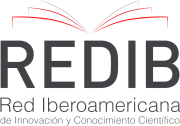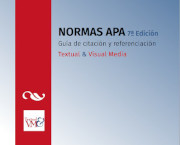About the Journal
What is Textual & Visual Media?
Textual & Visual Media (ISSN 1889-2515 | ISSN-e 2341-0981) is a scientific journal published since 2008 by the Spanish Society of Journalistic, whose articles are subject to double-blind peer review, which publishes research on journalism and communication.
It is currently published twice a year (June and December) in digital format and is open to multi-/transdisciplinary contributions from various fields of knowledge related to Communication. It seeks to disseminate theories, empirical evidence and methodological developments related to the study of journalism in its various genres and professional techniques, in the different phases of the communicative process, from the event to reception, and in all print, audiovisual and digital media.
Textual &Visual Media is an international scientific publication whose thematic focus is communication and journalism. With 14 years of publication and a hundred published articles, it accepts works focused on the scientific research of communication from its most diverse perspectives.
Present and future challenges of journalism
Artificial Intelligence and automated journalism
Information disorders
Disinformation and fact-checking
Communication and Politics
Audiences
Corporate communication
Social networks and digital communication
New journalistic formats
Social History of Communication
Theories of information and communication oriented towards social change
It is present in Dialnet Metrics and other international databases, catalogues and repertoires around the world, the journal is published every six months (June and December). Edited by the Spanish Society of Journalistic, it publishes papers in Spanish, English and Portuguese with all abstracts, keywords and web interface in Spanish, English and Portuguese.
The journal has three sections: an Editorial, which will be carried out at the request of the editorial team or in co-authorship with researchers of recognised prestige, and whose purpose is to present the annual issue; Articles, where research on any subject related to the interests and aims of the journal is published; and Reviews, for the publication of reviews of books and articles, both new and prestigious in the area of media, cultural and communication studies.
Sections and features:
-
Issue presentation
It is a space dedicated to the presentation of the issue. It is usually signed by the team responsible for the monographic issue or by the editorial team.
- Type of section: closed/guest articles
- Type of evaluation: editorial committee
-
Articles
This is the central section of the journal. It includes those works related to the theme of the issue, which is organised into monographic calls for papers. These are specialised studies and scientific advances, directed by experts in the various areas of communication research. The selection of papers follows an exhaustive blind peer review process.
- There are between 4 and 6 articles per issue
- Type of section: open/ reception of originals
- Type of evaluation: blind peer review
-
Miscellaneous
It is an area dedicated to the publication of articles not related to the central theme of the issue, but which provide an opportunity for scientific debate in the area of media, cultural and communication studies. The selection of articles follows an exhaustive process of blind peer review.
- There are between 1 and 3 articles per issue
- Type of section: open/ reception of originals
- Type of evaluation: blind peer review
-
Reviews
Section dedicated to the commentary and discussion of sources of interest for communication research. It accepts reviews of both books and articles of special interest. It is not, therefore, dedicated exclusively to the critical commentary of new publications, but also to the recovery of classics or to the enhancement of other sources such as academic journals, databases, museums or internet portals.
- It has between 1 and 3 articles per issue
- Type of section: open/ reception of originals
- Type of evaluation: editorial committee
Monographs and Call for Papers
Textual & Visual Media offers the possibility of proposing monographs for inclusion in upcoming editions, inviting thematic editors to suggest relevant and timely topics that represent a significant advancement in the current state of the art for researchers and professionals in Journalism and Communication.
The monographs aim to provide significant international exposure to the edition, enhancing both the visibility of the journal and the prestige of the thematic editors. However, their proposal will not imply any commitment to publish pre-agreed articles, as Textual & Visual Media adheres to a strict external expert peer-review policy.
About thematic editors
Proposals for monographic issues should include between 2 and 3 thematic editors of recognised prestige and experience within the scientific community in the proposed research field. Their academic contributions and h-index will be considered. Ideally, they should come from different nationalities and universities to ensure broader appeal for the proposed issue and, moreover, to promote the international focus of the journal.
The role of the thematic editor involves communicating with authors, compiling the articles for the issue, proposing evaluators and, in addition, collaborating with the editorial team of Textual & Visual Media during the article evaluation process. To this end, they must also commit to meeting deadlines, as punctuality is one of the most important aspects in the editorial processes of scientific journals.
The thematic editors will also be responsible for promoting the call for papers among their contact lists, professional and scientific associations, general and academic social networks, etc., during the open period for the monograph. Likewise, for monographs on specific topics, they may propose a set number of specialised reviewers with a high level of scientific expertise, who can also commit to joining the international review board for the proposed issue or future ones.
In collaboration with other scientific reviewers of the journal, they will oversee the evaluations of the manuscripts submitted for the proposed monograph (as long as there are no conflicts of interest, such as being from the same university or being the authors themselves), with the aim of individually assessing their contributions. Once the manuscript review process is complete, the guest editors, along with the editorial board, may participate in editorial decision-making sessions, where the best-evaluated manuscripts will be selected to form the monograph. Once the issue is finalised, they will write the presentation for the monograph.
Proposals process
1. One of the thematic editors should contact the journal's editorial team by e-mail (info@textualvisualmedia.com), introducing himself/herself and briefly explaining the proposal. He/she should also provide the names of the other editors and their affiliation, as well as a brief biographical sketch of them.
2. Within a maximum period of 30 days from receipt of the proposal, you will receive notification of whether the proposal is accepted or rejected depending on whether the criteria explained above are met.
3. In case of acceptance, a videoconference meeting will be arranged between the thematic editors and the journal's editorial board to finalise the proposal and the dates of the monograph.
4. Within 3 months, the thematic editors will design and send by e-mail (info@textualvisualmedia.com) a call for papers, in Spanish and English, with the following structure and information:
- Title of the monograph.
- Thematic editors. A brief CV of each editor (maximum 10 lines), e-mail, affiliation and ORCID should be included.
- Approach.
- Descriptors (maximum 6).
- Issues.
- Instructions and submission of proposals (including key dates).
5. Once approved, Textual & Visual Media will include the monograph in its programming and will agree with the thematic editors a deadline for the delivery of articles.
6. The journal will publish the call for papers on its website and, subsequently, the thematic editors and the editorial board of Textual & Visual Media will be responsible for disseminating it as widely as possible through the channels and social networks mentioned above. In this sense, promotion by the thematic editors is essential, as it can guarantee them high visibility in the national and international academic community.
7. At the end of the period for receiving articles for the monograph, the editorial team begins the phase of evaluation or rejection of the manuscripts received, depending on whether or not they meet the prerequisites. Papers that do not formally comply with the journal's rules will be rejected, as well as those that do not respond to the focus and thematic scope of the journal.
8. Afterwards, the scientific evaluation is carried out, in which the thematic editors (together with other reviewers) assess the manuscripts linked to the monograph so that their scientific contribution can be individually scored and described.
9. Once the evaluations have been carried out, the articles that have obtained the best scores by the reviewers will be selected.
10. Finally, once the articles to be included in the monograph have been chosen, the editorial team will carry out the design and final layout of the issue. The magazine will disseminate the issue on its website and on social and scientific networks.






















